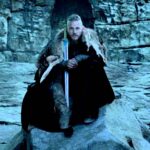When reading Norse myths and sagas, we are often told about enchanted weapons, mystical jewelry, and other magical objects, which are characteristic of the gods or important for resolving the drama and carrying forward the action.
Below is a list of some of the magical objects that appear in Norse mythology and a brief introduction to each.
Weapons
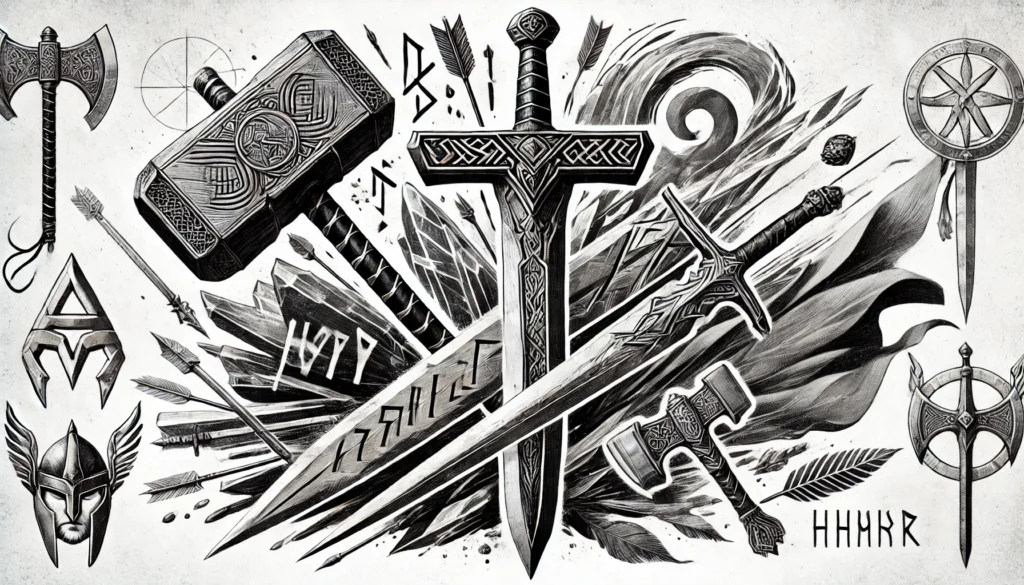
Many of the gods had magical weapons that enhanced their existing power. They also gifted weapons to favored heroes.
Forseti’s Axe
Forseti was the Norse god of justice and the son of Balder, making him a grandson of Odin. He carries a golden axe on his shoulder.
When the god came to the ancient Frisians in their time of need, he guided them across the sea using his axe as a rudder.
When they arrived, he threw the axe ashore, and where it landed, spring immediately erupted, giving the Frisians a new home.
He then revealed to them a set of laws to live by and disappeared with his axe.
Freyr’s Sword
Freyr had an enchanted sword that could fight by itself and could not be beaten, making the wielder invincible.
Freyr traded the sword for the hand of the giantess Gerdr in marriage, which means that he will not have it at Ragnarök when he fights with the fire giant Surtr, and the two kill one another.
Gram (Balmung/Nothung)
Odin visited the hero Sigmund during his sister’s wedding feast and embedded a sword within a tree inside the feasting hall, daring the guests to try and remove it. Only the hero Sigmund was successful.
King Siggeir was covetous of the fine sword, and when Sigmund refused to sell it to him, he captured and killed much of Sigurd’s family.
Sigmund’s sister hid the sword and returned it to Sigmund when he was buried alive. Sigmund used the sword for several battles, until it was broken by Odin during Sigmund’s final battle with King Lyngvi.
Sigmund’s wife Hjordis saved the broken sword and later gave the pieces to Sigmund’s son Sigurd.
He had the dwarven smith Regin reform the sword and then used it to kill Regin’s brother, the dragon Fafnir.
The sword was later used as a sign of chastity when it was placed between Sigurd and the Valkyrie Brunhild as they slept in the same bed.
Gridarvol
This staff belonged to the giantess Gridr, one of the many consorts of Odin.
She lent her staff Gridarvol to Thor when he traveled to the home of the giant Geirrod to kill him and his daughters.
He needed the staff because he was traveling without his hammer.
Gungnir

Gungnir is the spear owned by Odin made for him by the dwarves, the master craftsmen of Norse mythology.
It is so perfectly balanced that it never misses its mark, regardless of the skill of the user.
It is assumed to have been inscribed with runes as Viking warriors, who often used spears, often carved runes on their weapons in imitation of Odin.
In images and descriptions, Odin was rarely without his spear.
Hofud
Hofud, which means “head”, is the sword of the god Heimdall that he will use to fight Loki in the final battle at Ragnarök.
Jarngreipr and Megingjord
Jarngreipr is a pair of enchanted iron gloves and Megingjord is a power belt owned by the god Thor.
It is sometimes implied that he needed these items to be able to wield his hammer Mjolnir, but other sources suggest that they just enhanced his already prodigious strength.
Laevateinn (Haevatein)
This elusive object was forged by the god Loki and may have been a wand, sword, or dart.
It appears in a poem called Fjolsvinnsmal in which the wise porter Fjolsvidr informs the reader that they need the weapon to kill the rooster Vidofnir that sits at the top of the mighty tree Mimameidr, which is probably Yggdrasil.
It is possible that this was the mistletoe dart that Loki made to kill Balder.
Mjolnir
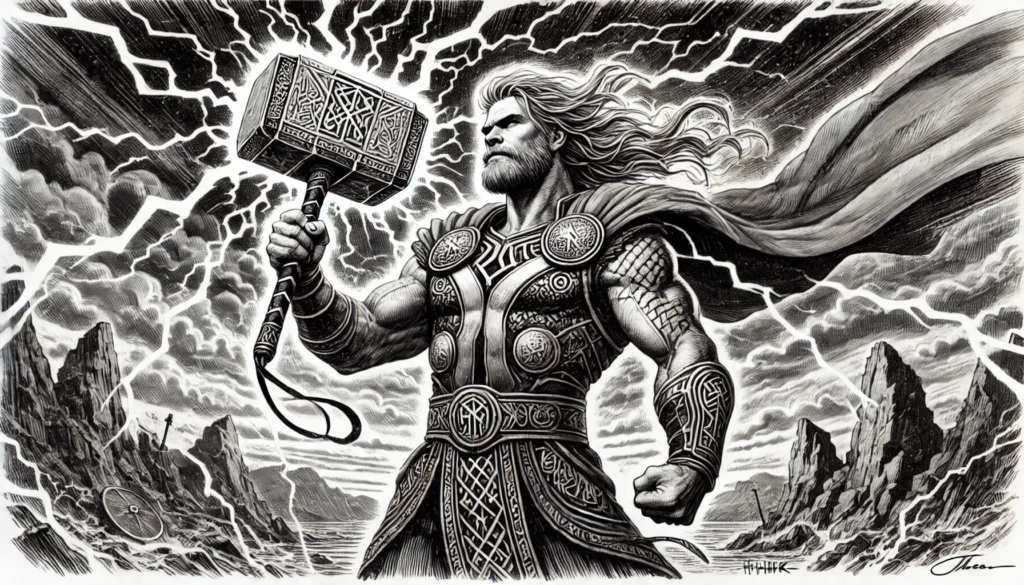
Thor’s hammer Mjolnir was forged for the god by the dwarves and was declared by the gods the finest object in existence, despite the fact that Loki’s mischief saw it forged with a handle much shorter than expected.
Thor uses the hammer to fight the giants, causing thunder and lightning with every blow.
It is powerful enough to level mountains.
Ridill
Ridill is a sword owned by the dwarf Regin.
He used it to cut out the heart of his dead brother, the dragon Fafnir, after he was killed by Sigurd so that he could eat his heart.
Surtalogi
At Ragnarök, the fire giant Surtr will leave his prison in Muspelheim and enter the other realms, burning them with his fiery sword Surtalogi.
He will fight to the death with the god Freyr with the sword, as the two kill one another.
Svalin
Svalin, which means “cold”, was a magical icy shield that sits between the realm of Midgard and the heat produced by the goddess Sunna, or Sol, as she travels across the sky.
Vidar’s Boot
Vidar is one of the many sons of the god Odin. When Odin is killed by the mighty wolf Fenrir at Ragnarök, Vidar is destined to avenge his father by killing the wolf.
He will be able to do this because he has enchanted boots that will allow him to stand in the mouth of the beast without being devoured.
Therefore, he will be able to drive his weapon into the wolf’s brain.
The Vikings believed that the scraps of leather produced when making boots were magically collected and added to Vidar’s boots, making them firm and strong.
Transportation
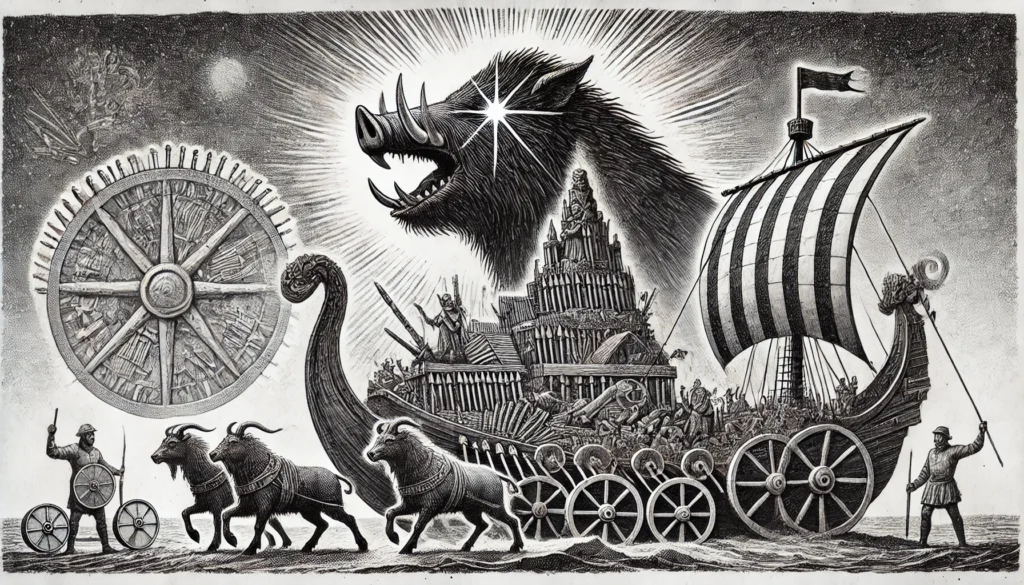
The gods also had many magical ways to travel through the Norse cosmos.
Gullinbursti
Gullinbursti is a golden boar that was forged by the dwarves and given to the god Freyr.
Gullinbursti means golden bristles and it is said that the boar shone so brightly that it could illuminate even the darkest night.
He also ran faster over air and water than any horse. Freyr is variously described as riding in a chariot pulled by Gullinbursti and riding directly on the back of the boar.
While Gullinbursti is an animal, he is included on the list because he was “forged” rather than born.
Hringhorni
The god Balder is said to own the greatest ship ever built, Hringhorni.
We know about the ship because when the god Balder is killed, he is laid to rest on the ship.
The ship was so great that the gods needed the help of the giantess Hyrrokkin to launch the ship.
She flung the ship so violently with her first push that the flames of the funeral pyre appeared and the earth trembled.
Naglfar
Naglfar is a ship made from the toenails and the fingernails of the dead that is moored in Helheim.
It is foretold that at Ragnarök, the ship will carry an army of the dead to join the hoard of giants and monsters in the battle against the gods.
Skidbladnir
The dwarves made a treasure that was gifted to the god Freyr called Skidbladnir.
This was a great ship big enough to carry all the gods with their steeds in full armor.
But it could also be magically folded down like a piece of paper and carried in the god’s pocket.
The ship was also enchanted to always have a fair wind and carry its passengers swiftly to their destination.
Thor’s Chariot
Several gods had chariots. Freya famously had a chariot pulled by cats.
Thor’s chariot stands out because it was drawn by his two goats Tanngrisnir and Tanngnjostr.
They were incredibly fast, but the impatient Thor once wore the goats out when he rode into battle to meet the giant Hymir and a host of his followers.
Thor also used the goats for nourishment, cooking their flesh while being careful not to damage the bones as he could bring the goats back to life from their bones using his hammer.
Jewelry and Clothing
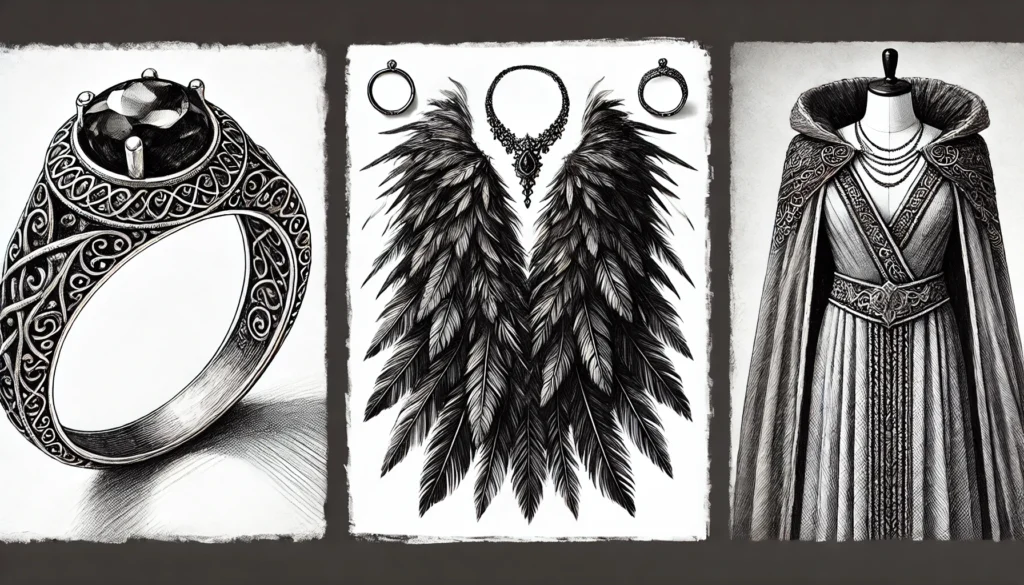
The gods had several magnificent pieces of jewelry, many of which had magical properties.
Andvaranaut
The Andvaranaut is a ring that was made by the dwarf Andvari and was the finest piece in his fantastical treasure trove.
But Loki stole Andvari’s treasure to pay the fine for killing Odr, the son of a dwarven king.
Andari begged Loki to leave him the ring, but the trickster refused, so the dwarf cursed the ring to bring misery to whoever possessed it.
Loki gave the ring to the king as part of his payment.
The king immediately became obsessed with the ring, as did his two sons, Fafnir and Regin.
They ended up killing their father, and then Fafnir turned into a dragon to take the ring for himself.
Later, Regin would have the hero Sigurd kill Fafnir and retrieve the ring for him.
But Sigurd would end up killing Regin, keeping the ring for himself, and suffering further misfortunes.
Brisingamen
Brisingamen was a beautiful golden necklace owned by the goddess Freya.
It was so closely connected with her that when Thor disguised himself as Freya, he borrowed the necklace to pull off the ruse.
The necklace was made by the dwarves and attracted the attention of the goddess, who decided she must possess it.
They agreed to give it to her if she spent a night with each of them, and the goddess agreed.
Draupnir
Draupnir, which means “dripper”, was a fine gold ring made for Odin by the dwarves.
It was enchanted so that every ninth day, eight rings of identical beauty would “drip” from the first.
This kind of treasure would have been valuable to a chieftain, as they were expected to share their wealth with their followers in exchange for loyalty.
In many ways, Odin is the ultimate Viking chief.
Falcon Feather Cloak
The Vanir goddess Freyja had a cloak made from Falcon feathers that enabled her to fly.
We know about this object because Loki borrowed it from her when he needed to take falcon shape to fly to Jotunheim and retrieve Idun from the giant Thjazi.
Sif’s Hair
In a famous story from Norse mythology, as a prank, Loki decided to remove the hair of the goddess Sif in such a way that it would never grow back.
When the prank was discovered, Sif’s husband Thor was so mad that he said that Loki had better replace the hair with something equally as beautiful or suffer the consequences.
To replace the hair, Loki went to the dwarves and asked them to create a golden headpiece that was enchanted to grow on her head.
They did, and while in the realm of the dwarves, Loki obtained several other treasures for the gods, including Mjolnir, Gungnir, Skidbladnir, Gullinbursti, and Draupnir.
Other Objects
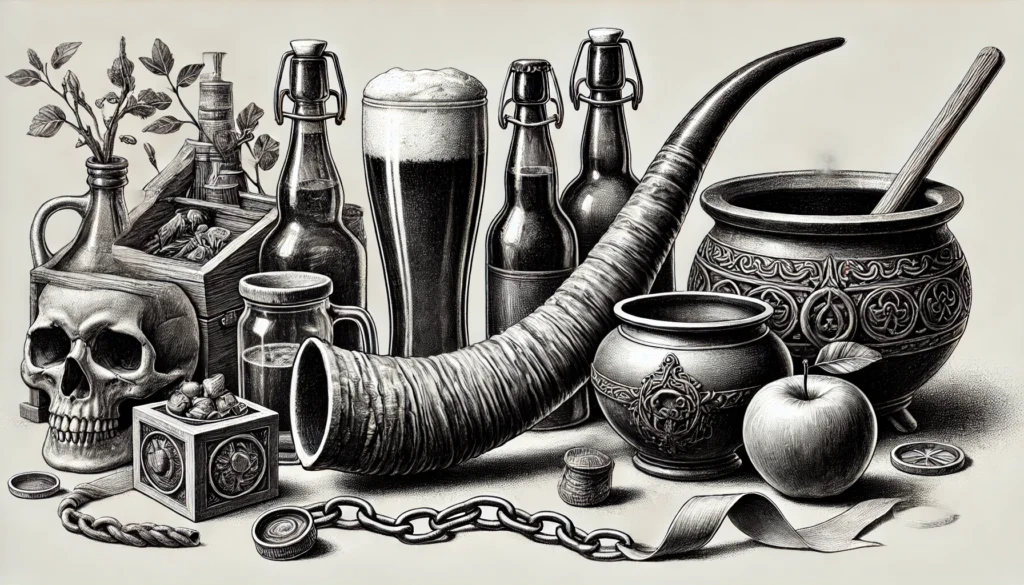
A variety of other magical objects appear in Viking mythology and feature in the stories of the Norse gods.
Bodn, Odrorir, and Son
Kvasir was a being made from the spittle of the Aesir and Vanir gods that was mixed during the peace agreement after the Aesir-Vanir war.
He was the most intelligent being ever to exist. The dwarves Fjalar and Galar killed Kvasir to use his blood to make the Mead of Poetry, a drink that would give anyone full mastery of the spoken word.
The mead was stolen from them by the giant Suttungr, and stolen from the giant by Odin.
He drank the mead, transformed himself into an eagle to fly from Jotunhiem to Asgard with the mead in his belly.
In Asgard, he spat the mead into three vessels that were prepared for that purpose, Bodn, Odrir, and Son.
Eldhrimnir
Eldhrminir is a cauldron of the cook of the gods Andhrimnir uses to prepare food for the fallen warriors living in Valhalla.
He prepares the meat of the pig Saehrminir, which is magically brought back to life each time it is killed and eaten.
Epli and Eski
Epli is the name of the magical fruit, probably apples, that the goddess Idun grows in Asgard and stores in a preserving box called Eski.
It was these fruits that maintained the youth and vigor of the gods.
When Idun and her apples were kidnapped by the giant Thjazi, the gods noticed she was missing when they started to age and feel feeble.
Gleipnir, Dromi, and Loeding
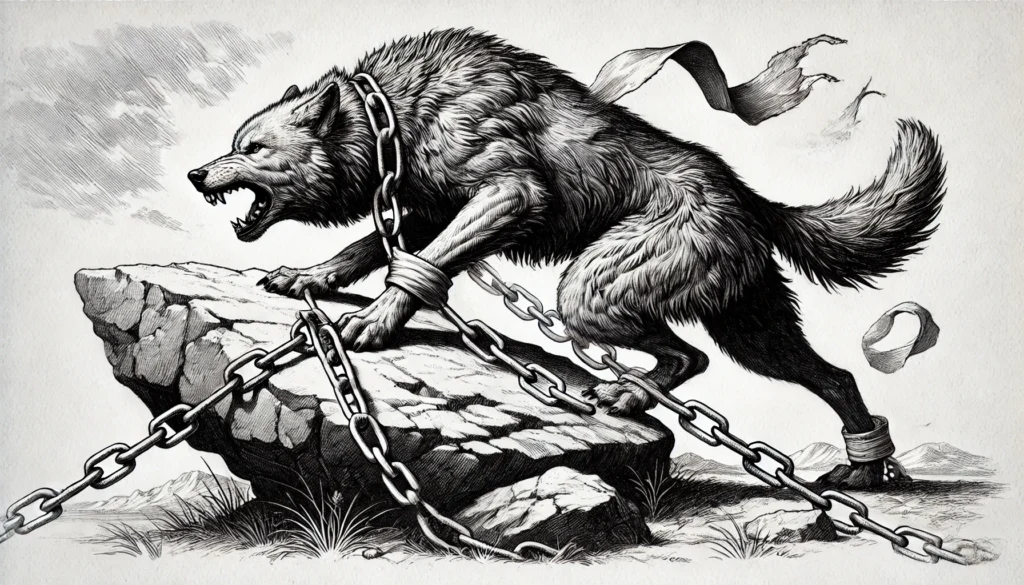
When the gods decided that the wolf Fenrir was too dangerous to be left free, they decided to chain him to a rock called Gioll on a deserted island.
But they knew that they needed strong fetters to secure the mighty wolf. Initially, the gods tried to make the fetters themselves.
First, they made chains called Loeding, but the wolf broke them with ease.
They then made bonds even stronger than the first, called Dormi, which he also broke easily.
Finally, the gods went to the dwarves and asked them to make unbreakable chains.
They made Gleipnir, which they made from impossible things, to make the chains impossible to break.
The magical ingredients included the sound of a cat’s walk, the beard of a woman, the roots of a mountain, the sinews of a bear, the breath of a fish, and the spittle of a bird.
The chains appeared like ribbons but were unbreakable.
With Gleipnir, the gods effectively imprisoned Fenrir until Ragnarök, though the god Tyr had to sacrifice his arm to imprison the wolf.
Gjallarhorn
Gjallarhorn is the horn owned by the god Heimdall that he will blow to warn the gods when Ragnarök arrives. Its sound will be heard in all corners of the world.
The same horn seems to have been used to give the head of the dead god Mimir water from the Well of Wisdom to magically reanimate the head.
Hlidskjalf
Hlidskjalf is Odin’s throne in Asgard from which had can look out over all the worlds of the cosmos and see everything that is happening.
Only Odin and his wife Frigg are allowed to sit in the chair.
One time, Freyr broke the rules and sat in it. From the chair, he saw and fell in love with the giantess Gerdr.
This initially threw him into a depression when he realized that he could not have the giantess.
He then traded his enchanted sword for her hand in marriage.
Hymir’s Cauldron
Thor and Tyr travel to the home of the god Hymir to borrow a cauldron, as it is the only cauldron known that is big enough to brew enough mead for all the gods.
They use it at a great feast held in the hall of the sea giant Aegir.
Loki is not invited to the feast but later attends and insults everyone in a story recorded as the Lokasenna.







